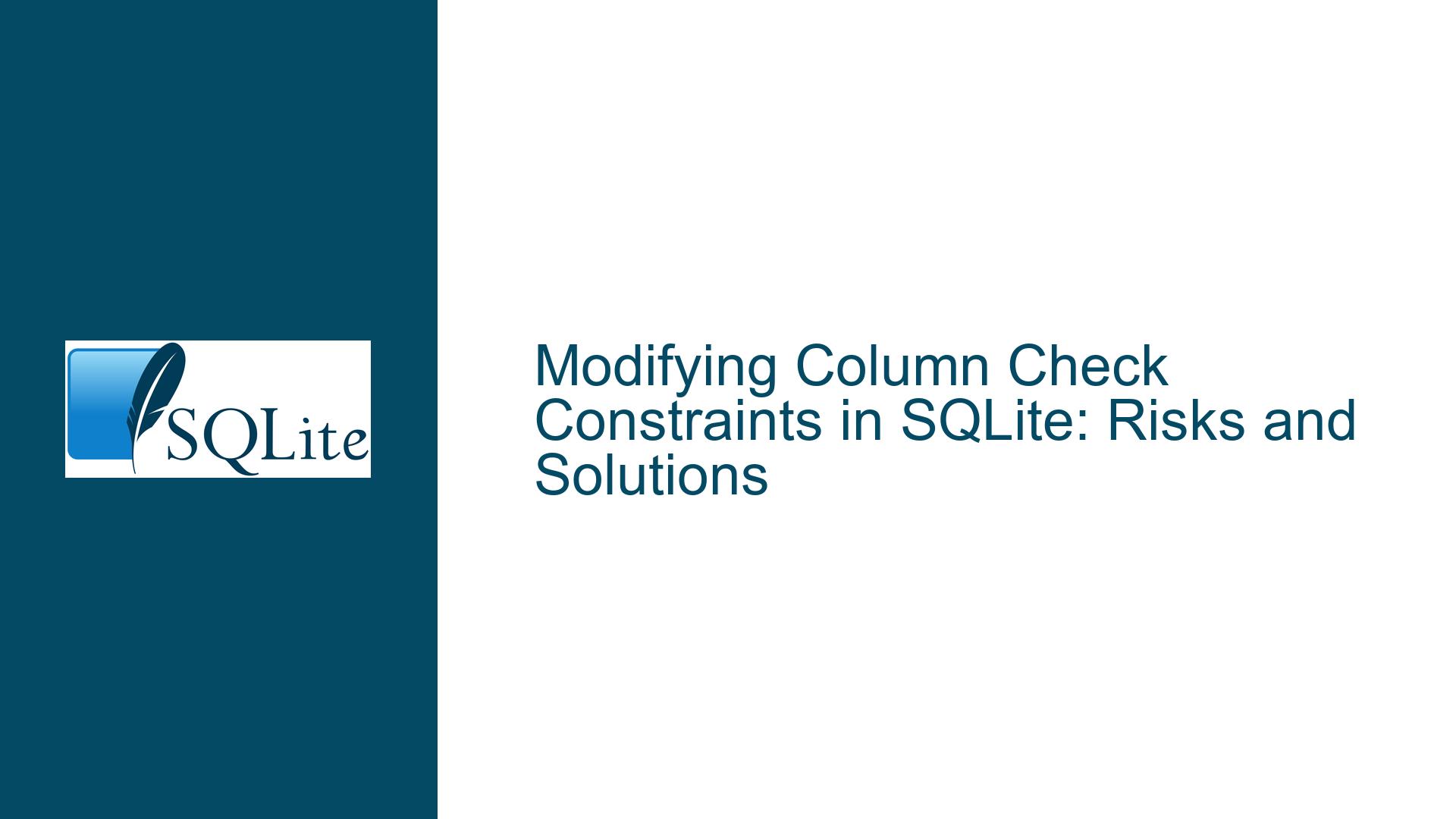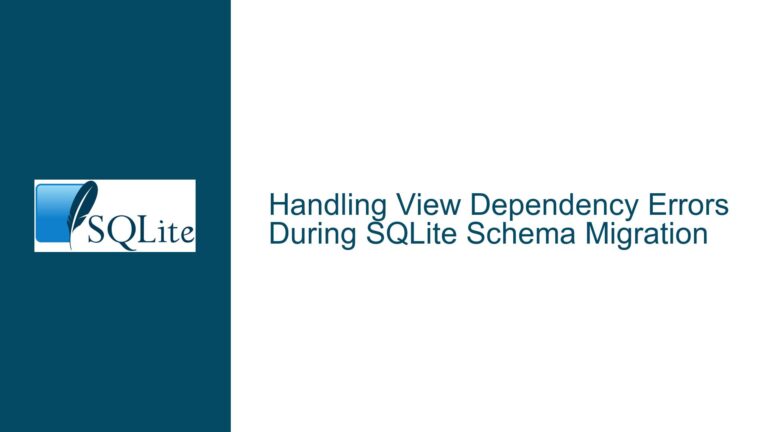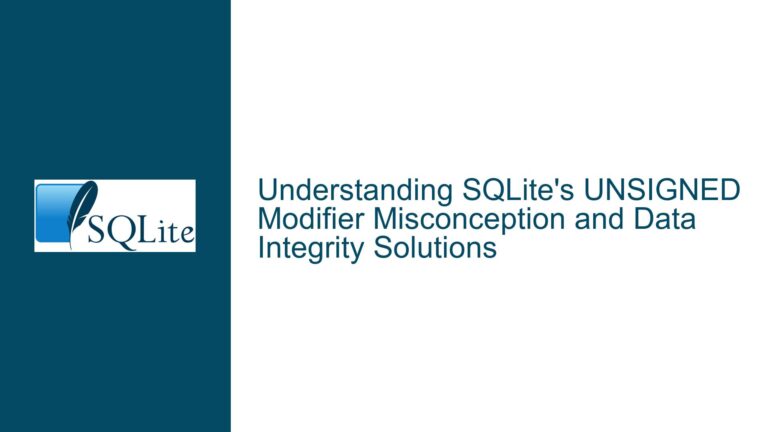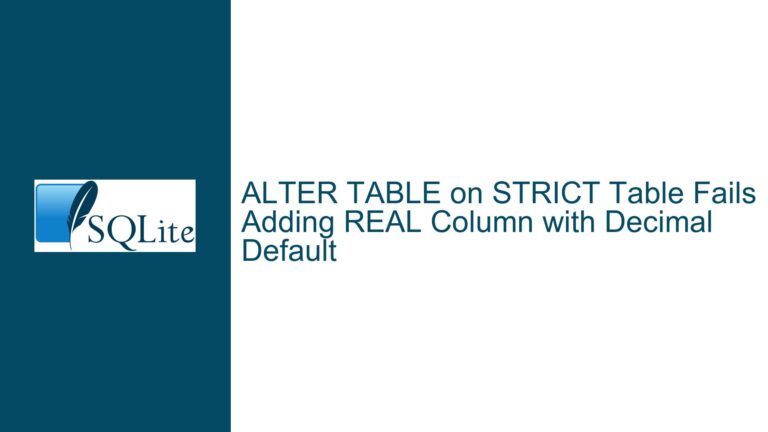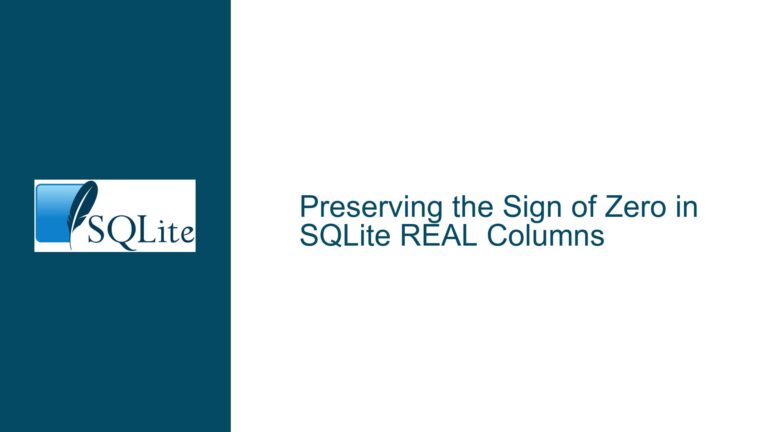Modifying Column Check Constraints in SQLite: Risks and Solutions
Understanding the Limitations of SQLite’s ALTER TABLE for Check Constraints
SQLite is a powerful and lightweight database engine, but it has certain limitations when it comes to schema modifications. One such limitation is the inability to directly alter the check constraint of an existing column using the ALTER TABLE command. Check constraints are used to enforce domain integrity by restricting the values that can be inserted into a column. For example, a check constraint might ensure that a column only accepts positive integers or values from a predefined list.
When a user needs to modify a check constraint—such as expanding the list of allowed values—SQLite does not provide a straightforward way to do this. The ALTER TABLE command in SQLite supports a limited set of operations, such as renaming a table, adding a column, or renaming a column. However, it does not support altering or dropping check constraints directly. This limitation can pose a significant challenge when the database schema needs to evolve over time, especially for large tables where data migration is not trivial.
The absence of native support for modifying check constraints means that users must resort to alternative methods, each with its own set of risks and complexities. These methods range from creating a new table with the desired constraints and migrating data to using advanced features like the writable_schema pragma, which allows direct modification of the database schema. Understanding these options and their implications is crucial for maintaining data integrity and ensuring a smooth schema evolution process.
The Risks of Using writable_schema for Schema Modifications
One of the most advanced and risky methods for modifying a check constraint in SQLite involves using the writable_schema pragma. This pragma allows users to directly edit the sqlite_schema table, which stores the database schema definitions. By enabling writable_schema, users can perform SQL UPDATE operations on the sqlite_schema.sql column to modify the table’s DDL (Data Definition Language) statements, including check constraints.
However, this approach is fraught with risks. The sqlite_schema table is a critical component of SQLite’s internal architecture, and any errors in its modification can render the database unusable. For example, a typo or incorrect syntax in the modified DDL can lead to a corrupted schema, making it impossible to query or modify the affected table. Additionally, changes to the schema must be compatible with existing data and indexes. If the modified check constraint conflicts with existing data, the database may enter an inconsistent state, leading to errors during query execution or data retrieval.
To mitigate these risks, it is essential to follow a rigorous testing and validation process. Before applying any changes to the live database, users should test the modifications on a copy of the schema to ensure that the new check constraint works as intended. Scripting the entire process is also recommended to minimize the risk of human error. Keeping a backup of the original schema definition provides a rollback plan in case something goes wrong. Finally, after making changes, users should run integrity checks using PRAGMA integrity_check and PRAGMA foreign_key_check to verify that the database remains consistent and free of errors.
Best Practices for Safely Modifying Check Constraints
Given the risks associated with directly modifying the schema, the safest approach to changing a check constraint in SQLite is to create a new table with the desired constraints and migrate the data from the old table. This method involves several steps: defining the new table with the updated check constraint, copying data from the old table to the new one, dropping the old table, and renaming the new table to the original table’s name. While this approach is more time-consuming, especially for large tables, it ensures that the database remains consistent and minimizes the risk of data corruption.
To streamline the process, users can automate the data migration using SQL scripts or application code. This reduces the likelihood of errors and ensures that the migration is repeatable. Additionally, performing the migration within a transaction provides an extra layer of safety. If any step fails, the transaction can be rolled back, restoring the database to its original state.
For users who must modify the schema in-place due to the size of the table or other constraints, the writable_schema pragma remains an option. However, this should be considered a last resort and used only after thorough testing and preparation. By following best practices—such as testing on a copy of the schema, scripting the process, and performing integrity checks—users can minimize the risks and achieve a successful schema modification.
In conclusion, while SQLite’s limitations in schema modification can be challenging, understanding the available options and their associated risks allows users to make informed decisions. Whether opting for the safer data migration approach or the more advanced writable_schema method, careful planning and execution are key to maintaining a robust and reliable database.
